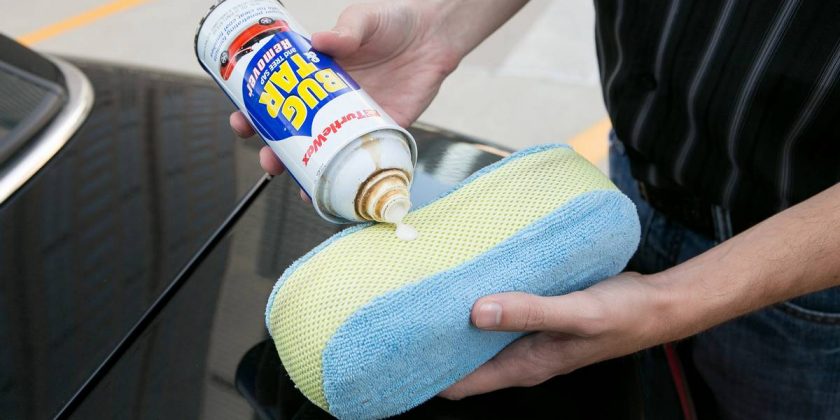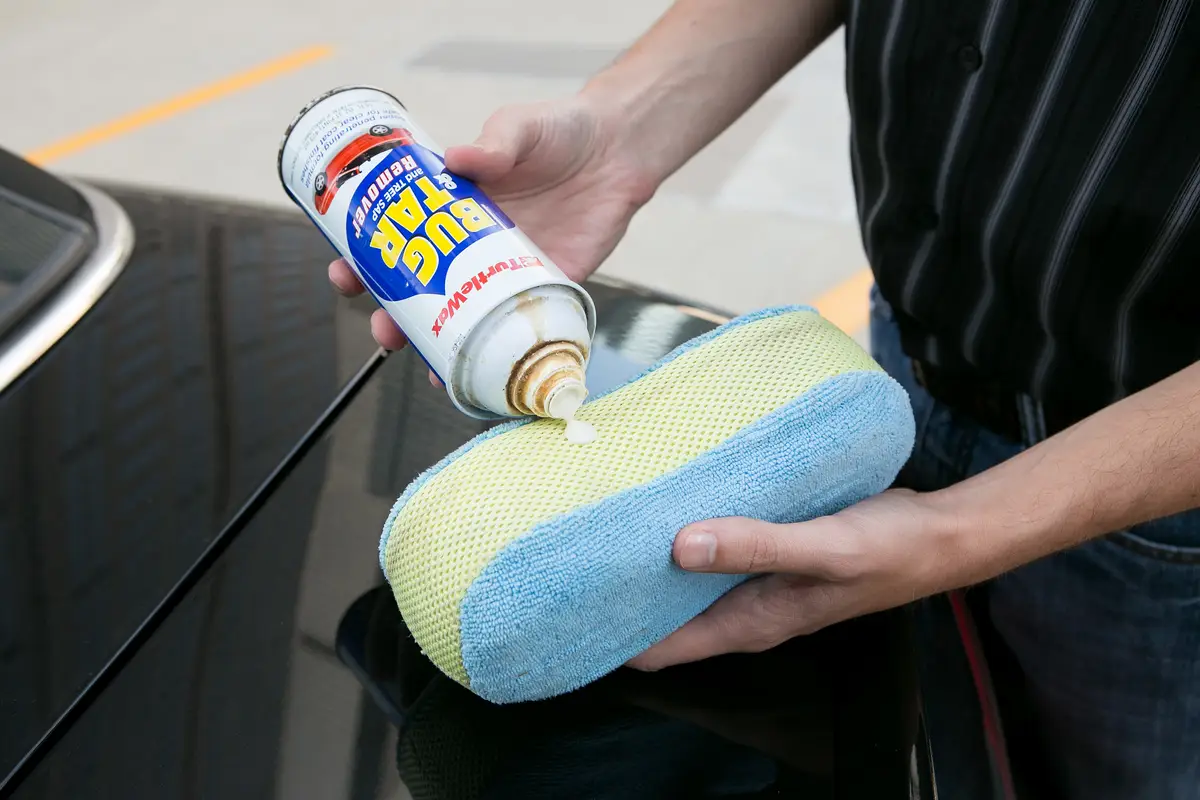Running a vehicle through an automatic car wash or doing it by hand often doesn’t remove road tar — that gooey, black stuff that collects on wheels, bumpers and other car parts. How do you safely get this pesky mess off of your car? Here are some options for products you can buy, and some you may already have at home.
Related: Tips for Washing Your Car in Winter
Bug and Tar Remover
Several spray and liquid products that are called “bug and tar remover” are available in auto parts stores and elsewhere and can get rid of tar. These products are sprayed or rubbed on the tar with a microfiber cloth. They often require a lot of elbow grease or multiple applications, especially if the tar has been there a long time.
Bug and tar remover can also remove small amounts of paint from when another vehicle bumps into yours or you rub a bumper against a painted fence post or garage door frame (though it won’t remove any scratches).
Other Products
Some car detailers and body shops recommend using WD-40 to remove tar. Though many think WD-40 is a lubricant, it is a solvent that can dissolve and loosen tar, bugs and bird droppings.
The recommended technique with WD-40 is to spray it on the spots or on a microfiber cloth, let it sit for about 10 minutes and then wipe it off with dry cloth. The number of applications and amount of rubbing needed will be higher on spots that are larger and have been there for weeks or months.
Other solvents may work as well, though before using them make sure they are suited for use on automotive paint. Substances such as mineral spirits and lacquer thinners will remove tar but may also remove the clearcoat finish or damage the paint.
If none of the above products is handy, peanut butter can be used in a pinch. Rub the peanut butter on the tar, let it sit for 10 minutes or more, and then rub it off with a clean microfiber cloth. Don’t expect peanut butter to instantly produce great results; this isn’t what it’s made for but it could help.
No matter what kind of cleaner is used, the area should be washed afterward and waxed to protect the finish.
More From Cars.com:
- What Is an EGR Valve and What Does It Do?
- Why Do My Tires Lose Pressure in Cold Weather?
- What Is a Multipoint Inspection?
- More Car Service Advice
Cars.com’s Editorial department is your source for automotive news and reviews. In line with Cars.com’s long-standing ethics policy, editors and reviewers don’t accept gifts or free trips from automakers. The Editorial department is independent of Cars.com’s advertising, sales and sponsored content departments.
Source: Read Full Article

